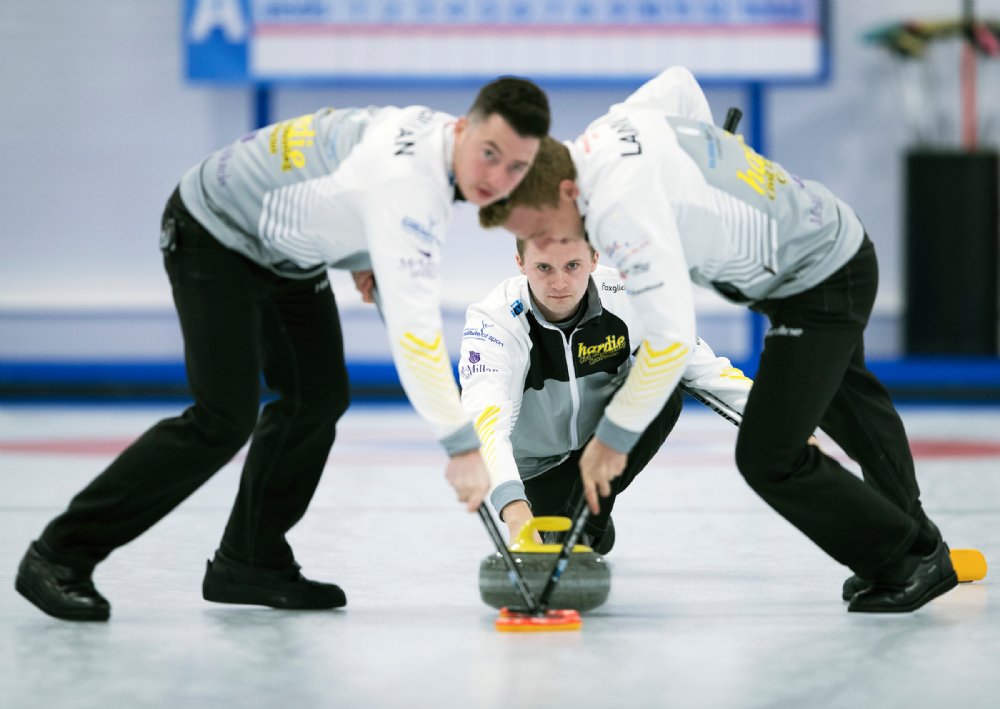In the recently concluded Curling World Championship, Canada, skipped by Jennifer Jones, claimed a 7-6 win over
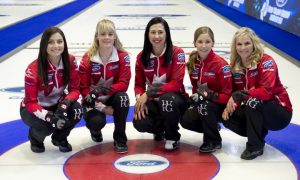
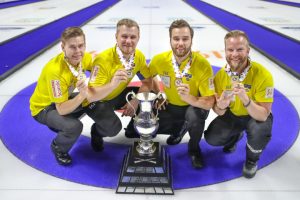
Olympics gold medallist Sweden in the Women’s category. Russia took bronze following a 6-5 win over the United States. In the Men’s division there was a role reverse as Sweden, skipped by Niklas Edin, beat Canada by 7-3. Scotland took the bronze after beating Korea 11-4.
The Curling World Championship that started in 1959 as the Scotch Cup, had 13 teams playing round-robin preliminary round in 2018. Until 2017 format, 12 teams played the round-robin preliminary round. This year also saw a total attendance of 69,391 for the Women’s Championship in Canada, a record for a Canada-hosted world women’s championship. The Men’s Championship, this year, has found a new sponsor- China’s premier shoes and sports goods supplier- 361°. The Women’s Championship was sponsored by automobile manufacturers Ford.
HISTORY OF CURLING
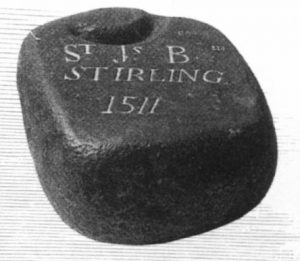
Thus, for good, the world of Curling has spread its wings. With stones, pebbles, brooms- the words that hardly resemble any sport- Curling has evolved over many hundreds of years. It is strongly believed that Curling has its origin in Scotland, in the early part of the sixteenth century- the proof of which was found in the form of a Curling stone, inscribed with the date 1511, being excavated from a dried old pond at Dunblane.
But the exact reference to Curling history was found in 1976 when some old documents, including certain protocol books, were discovered in the safe-keeping of a long-established law firm in Scotland and were deposited in the Scottish Records Office. One of the protocol books among them was of John McQuhin, a Paisley notary. The Scottish researchers found that the book that was noted in Latin had the first written evidence of Curling. It recorded a challenge about throwing stones across the ice between John Sclater, a monk at Paisley Abbey and Gavin Hamilton, a representative of the Abbot in February 1541. The report further indicated that Sclater threw the stone along the ice thrice and agreed for the contest.
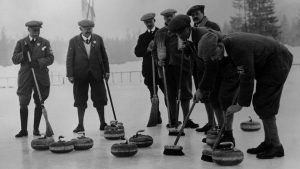
For the next three centuries, it can be emphatically said that Curling was a Scottish game. Played on frozen lochs and ponds, it was so popular that poets of the Lowlands of Scotland celebrated the game in their published poems. At the beginning of 19th century, many Curling clubs came into existence in different parts of Scotland. Rules were made and matches were played between clubs.
MIGRATION OF CURLING
As the Scots started moving out of Scotland, the game of Curling was also exported around the other European and American nations, mainly in Canada. The first Canadian Curling club was founded in Montreal in 1807. It also spread in the United States where the first Curling club was established in 1830. Before the end of the 19th century, the sport was introduced to Sweden and Switzerland.
FORMATION OF WORLD CURLING FEDERATION
As the game spread there was a need for a united federation. Thus, Curlers from all over the world came together to
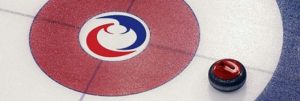
form the World Curling Federation (WCF) in 1966 with the aim to facilitate the growth of the sport through a network of member associations and federations. Originally named as International Curling Federation (ICF), Perth in Scotland was chosen for its head office.
RULES AND METHODOLOGY OF CURLING
The WCF determined further rules of the game. Curling consists of two teams of four individuals each. The objective for a team is to have their stone closest to the centre of a target, which is 126 feet away from where the slider releases the stone. Each member of the team, known as Skip, Lead, Second and Third, has the opportunity to slide the stone. As the stone makes its way down the icy path, two other teammates use their brooms to strategically reduce friction on the ice to control the speed and trajectory of the stone.
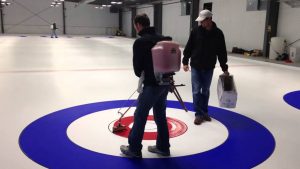
Ice making for curling is also a very skilled profession. As informed by Judith McCleary, Head of Development of Scottish Curling, “There is a lot of preparation involved in cutting the ice to get the surface completely level. First de-ionised water is spread that is devoid of any kind of impurities. There is then ‘pebbling’ which is an art itself! A pebbling can is carried on the ice maker’s back (it is similar to a large watering can) and a hose with pebbling head is used to spray the ice. There are different pebble heads used which have different shapes & numbers of pebbles. The ice maker is the one who selects the correct one dependent on the duration of game, format of game etc. There are also cutting machines such as the ‘Ice King’ and ‘Nipper’ which are used by ice technicians. The nipper is used to cut part of the ‘pebble’ off after the ice maker has sprayed pebbled the ice. This ensures the ice is fast in speed from the start.”
CURLING AS AN OLYMPIC SPORT
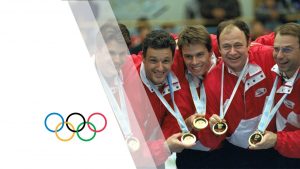
Thus, with rules, regulations, playing format and teams, the sport grew further and finally Curling was included in the 1998 Winter Olympics at Nagano. However, in February 2002, the International Olympic Committee (IOC) decided that the Curling competition would be considered an official Olympic event from the 1924 Winter Olympics when the game was played outdoors. The medals were awarded for the 1924 Winter Games- gold medal was won by Great Britain and Ireland, two silver medals by Sweden and the bronze by France. Since the 1998 Olympics, Canada has dominated the sport with their men’s teams winning gold in 2006, 2010 and 2014 and silver in 1998 and 2002. The women’s team won gold in 1998 and 2014, a silver in 2010 and a bronze in 2002 and 2006. The mixed doubles team won gold in 2018.
AILSA CRAIG AND KAYS
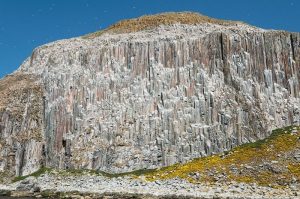
But though the world rules, still Scotland remains the most desired destination for this very unusual sport. The granite used for Curling is best found in Ailsa Craig, an island of only 240 acres that is 16 kilometres west of mainland Scotland. The island famously produces Common Green Granite, Blue Hone Granite and Craig Red Hone Granite. Famous for being the older of only two sources for all stones in the sport, Ailsa’s granite has been found to be very resilient and durable.
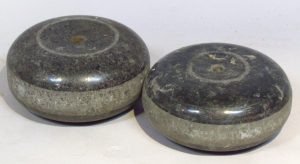
Kays of Scotland, that has been making Curling stones since 1851, has the exclusive rights to harvest the three qualities of Ailsa Craig granite. The characteristics of the different granites are matched and combined to produce world class Curling stones. The Blue Hone granite is the only effective material for the stone’s running edge on today’s modern ice. The Common Green Granite is used for the body of the stone because its unique structure is more resistant to heat transfer. The Blue Hone insert is fitted to the Ailsa Craig Common Green stone body, a technique known as Ailserts that has been perfected by Kays.
SCOTTISH CURLING FAMILIES
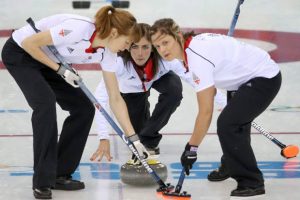 Thus, through ups and downs, greens and reds, Curling prevails in Scotland. It has shown the world how to play the game and to keep its rich tradition alive, several young curlers have inherited it as a family sport. The Smiths, Muirheads, Wadells are spearheads of Curling in Scotland. Thomas, Glen and Eve have followed Gordon Muirhead’s passion, Kyle, Cammy and Mili Smith followed the footsteps of their father Dave and Jimmy Wadell has silently ignited the flame of curling in Kyle, his grandson.
Thus, through ups and downs, greens and reds, Curling prevails in Scotland. It has shown the world how to play the game and to keep its rich tradition alive, several young curlers have inherited it as a family sport. The Smiths, Muirheads, Wadells are spearheads of Curling in Scotland. Thomas, Glen and Eve have followed Gordon Muirhead’s passion, Kyle, Cammy and Mili Smith followed the footsteps of their father Dave and Jimmy Wadell has silently ignited the flame of curling in Kyle, his grandson.
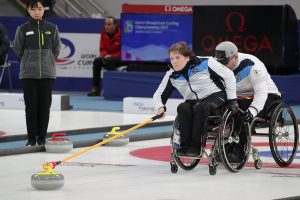
So, though being a minority sport with only about 17,000 casual and regular Curlers, these youngsters bring new lease of life. The Scotting Curling Federation also have Wheelchair Curling clubs and Vision Impaired Curling clubs. Judith McClearly added, “In addition to this, we provide programmes for deaf participants, people with learning disabilities, health issues such as Multiple Sclerosis etc. The great thing about Curling is that disabled participants can take part in mainstream curling clubs; it is a very inclusive sport.”

